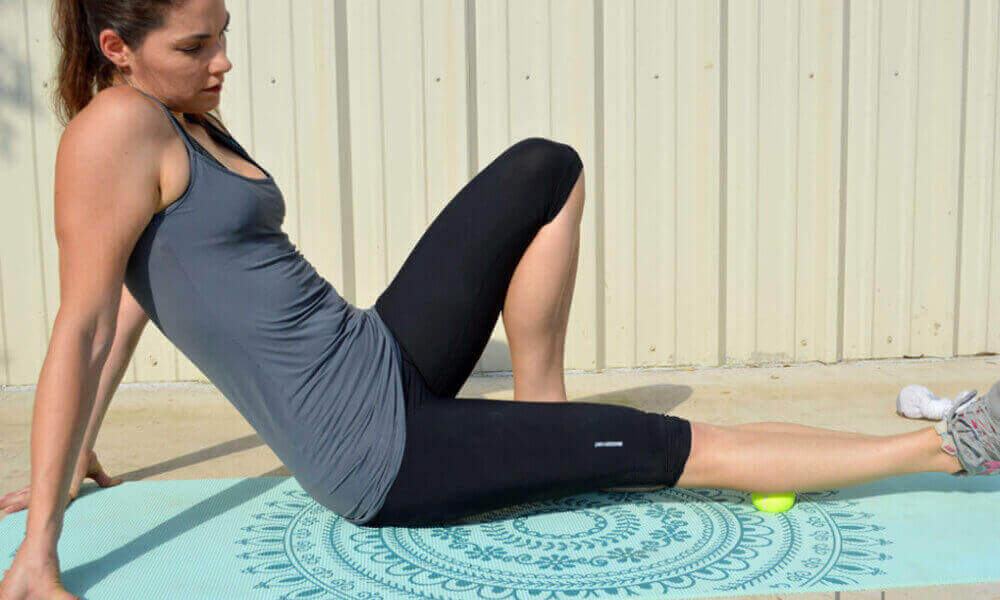Thanks to the explosion of workout training programs, lacrosse balls have surfaced as an important tool in any gym setting. But they most likely aren’t being used as intended. Unlike tennis balls, lacrosse balls are hard and dense. They don’t soften under pressure. Lacrosse balls can be used as a powerful massage device that can help relieve pain and improve function in sore muscles.
Lacrosse ball massage is a form of self-myofascial release. Fascia, the thin sheath of connective tissue that covers all the muscles and organs of the body, is responsible for connecting muscle groups. When disrupted, it can cause pain and poor movement patterns.
Tight fascia can pull the body out of alignment and increase pressure on muscles and joints, causing pain. The goal of myofascial therapy is to stretch and loosen the fascia so the underlying tissue can move freely.
What are the benefits of lacrosse ball massage?
– increase joint range of motion
– help muscle performance
– decrease fatigue after exercise
– decrease soreness after exercise
Try these five self-massage techniques to soothe your sore muscles after your next big workout.
Glutes:Tight or irr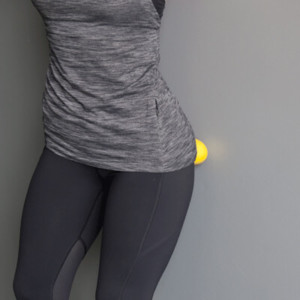 itated glute muscles can cause pain and discomfort in the low back and hip region. Relieving tension in the buttocks area will not only feel good, but it also allows for greater flexibility in the hips and back.
itated glute muscles can cause pain and discomfort in the low back and hip region. Relieving tension in the buttocks area will not only feel good, but it also allows for greater flexibility in the hips and back.
Stand with your back against a wall with the lacrosse ball between the wall and the meaty area of your glutes.
Move up and down and side to side until you find a tender spot.
Relax your weight into the wall, allowing the ball to apply pressure on this area.
Hold this for 30 seconds, or until you feel the pain subside.
Repeat on other side.
Hamstrings:
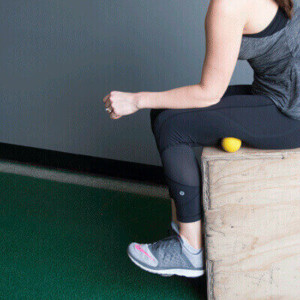 Many adults suffer from tight hamstrings due to increased amounts of time spent sitting. This can contribute to hip, knee, or back pain, and can impair movement patterns.
Many adults suffer from tight hamstrings due to increased amounts of time spent sitting. This can contribute to hip, knee, or back pain, and can impair movement patterns.
Sit on a hard chair or table that’s high enough off the ground to let your legs hang. Place the lacrosse ball under your thigh, moving it around until you find a tender spot.
Lean forward and rest your arm and your body weight on your thigh.
Slowly extend and bend your knee for 30 seconds.
Move the ball as needed and repeat.
Upper back and shoulders: The trapezius muscle is a large muscle that connects your upper back, neck, and shoulders.
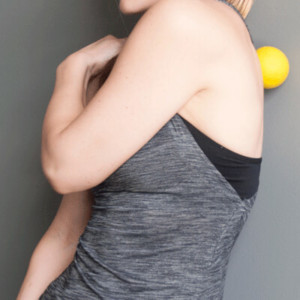 It can often get tight and painful with overuse or stress. This can contribute to neck and shoulder pain.Stand with your back against a wall with a lacrosse ball between the wall and your upper back. Position the ball on one side of your spine.
It can often get tight and painful with overuse or stress. This can contribute to neck and shoulder pain.Stand with your back against a wall with a lacrosse ball between the wall and your upper back. Position the ball on one side of your spine.
Move around in all directions until you find a tender spot.
Relax your weight into the wall and cross your hands over your chest.
Continue to move up and down slowly, massaging any knots or tender areas you may encounter.
Repeat on the other side.
Feet (plantar fascia):
Plantar fasciitis causes pain in the bottom of the 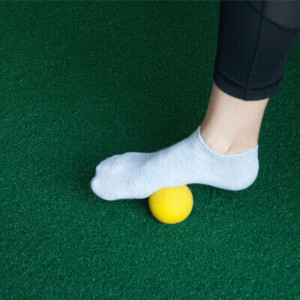 foot. It’s caused by an inflamed or irritated plantar fascia, the thick band of tissue running along the sole of your foot. Myofascial release can help break up adhesions and reduce pain.
foot. It’s caused by an inflamed or irritated plantar fascia, the thick band of tissue running along the sole of your foot. Myofascial release can help break up adhesions and reduce pain.
Sit comfortably with your feet on the floor.
Place the lacrosse ball under the arch of your foot.
Lean forward, putting weight on your affected side. Slowly roll the ball back and forth along the arch of your foot.
Continue for 30 to 60 seconds.
Repeat on other side if necessary.
If you can tolerate the brief amount of pain, a lacrosse ball massage is an excellent way to release tension. It can help break up adhesions between the fascia and underlying muscles. Use these techniques on your problem areas daily, especially after a strenuous workout. Regular self-myofascial release can not only help you feel great, but improve performance and muscle recovery.

